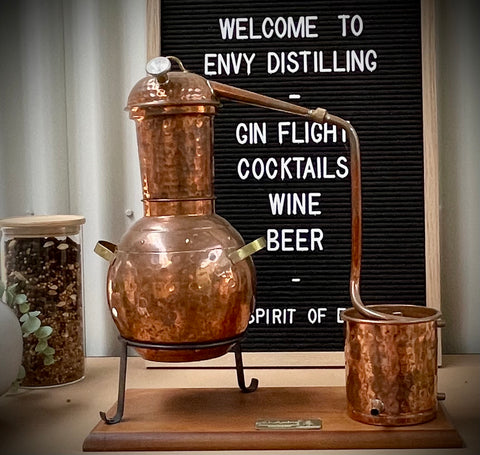
For those that have visited our distillery, you may have been shown our interesting copper stills out back. For those yet to visit, or wanting to know more, this blog is to explain what's back there in the production area, and why.
The Stills
We've selected a series of traditionally made, hand-beaten, Portuguese copper stills. We have four stills in total, each serving a different purpose during the development of our recipes, and production of our spirits.
- Experimental still: This little 1L copper still is usually out on display in our distillery bar. But don't be fooled - it's still an active player! We use this still when crafting a new gin recipe, and produces about a bottle of spirit. This is super handy to do a few experiments, fine tunings, and generally try things out without too much waste. Once something has been developed here, we progress to...

- "Little Miss": This is our 10L copper still, and produces around 6 bottles of spirit. We use this still when an experiment has graduated to "Envy X", which is our sub-category of innovative new things, which aren't really products yet. We produce a few bottles here, informally labelled, to serve to visiting customers interested to try them out. If we get great feedback, these innovations may progress to be real and persistent products that we scale up - using our next still...

- "Lady": This is our main spirit still - which we use for both gin and part of the brandy process too. She is 100L, which will output about 60 bottles of gin (give or take). Lady is our workhorse of gin production, and this means our matches are in lots of 60 bottles - or a combination of these that we blend from several back-to-back runs.

- "Madam": At 300L, running off-grid with solar power only, Madam is about as big as we dare go for the moment. She is used for wine distillation, which is the first part of producing brandy - converting 12-14% wine into 40% "low wines". (The second distillation is the spirit run, which uses Lady, to refine to a beautiful 70% spirit for casking).

We think they look beautiful, and evoke a sense of distilling history and the wonder of the craft. Another blog post will dive deeper into these traditional techniques, and what makes our processes so interesting!
